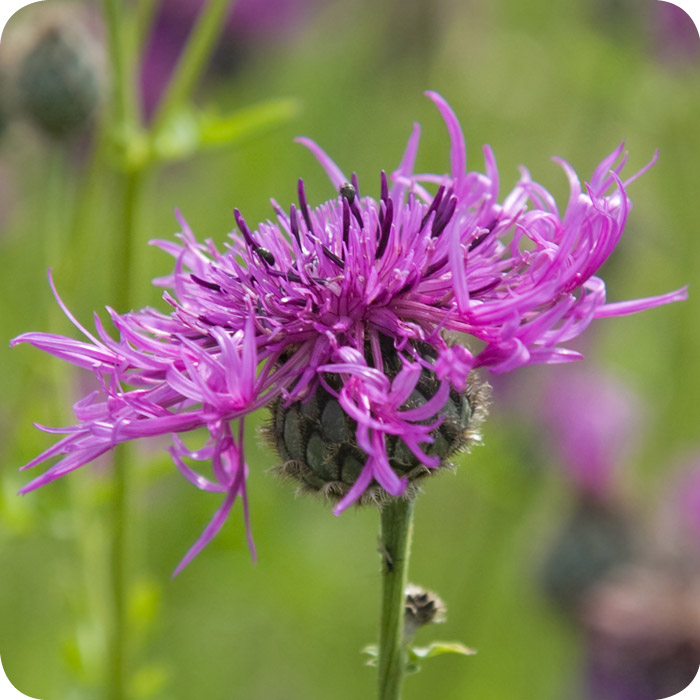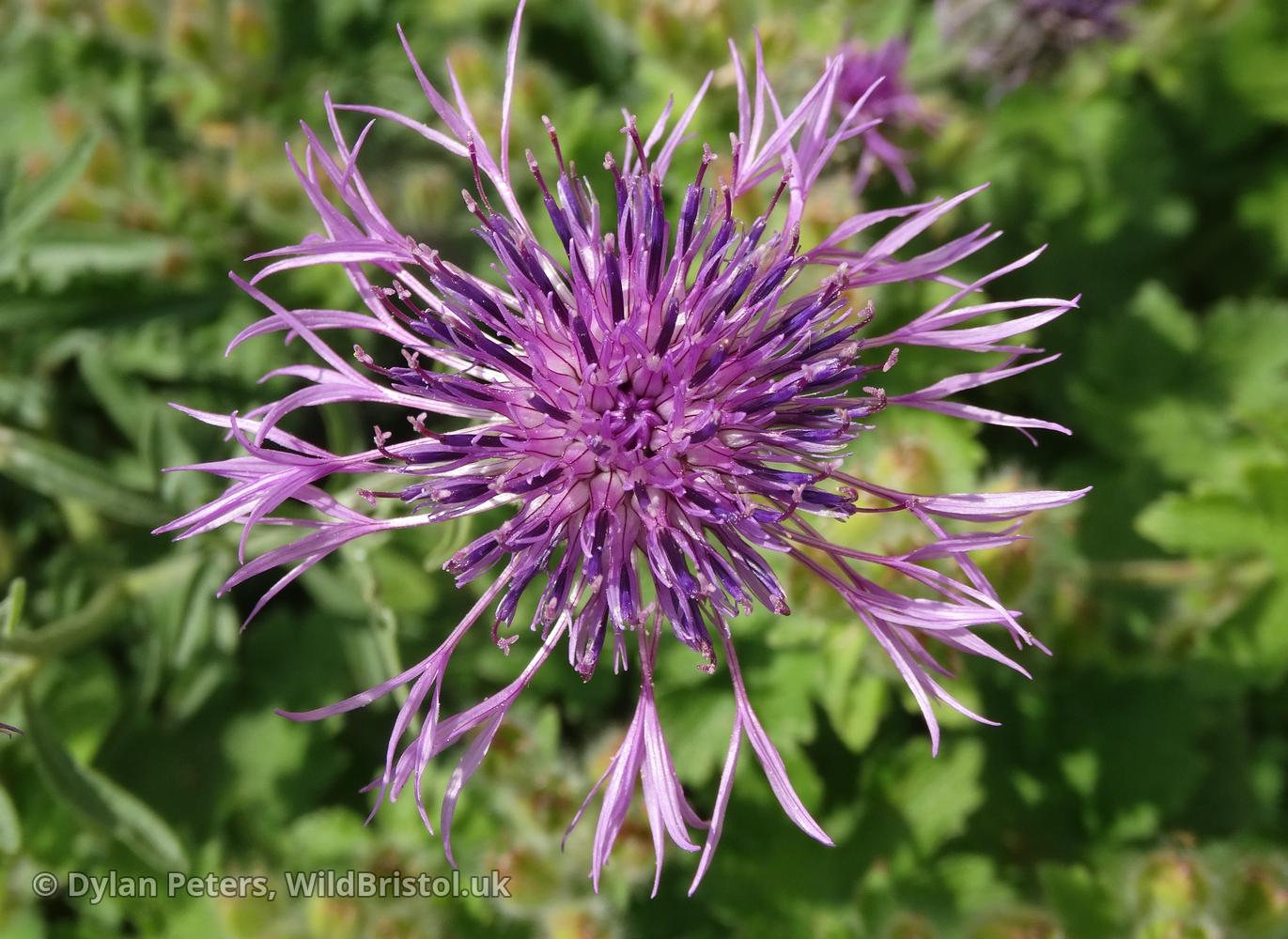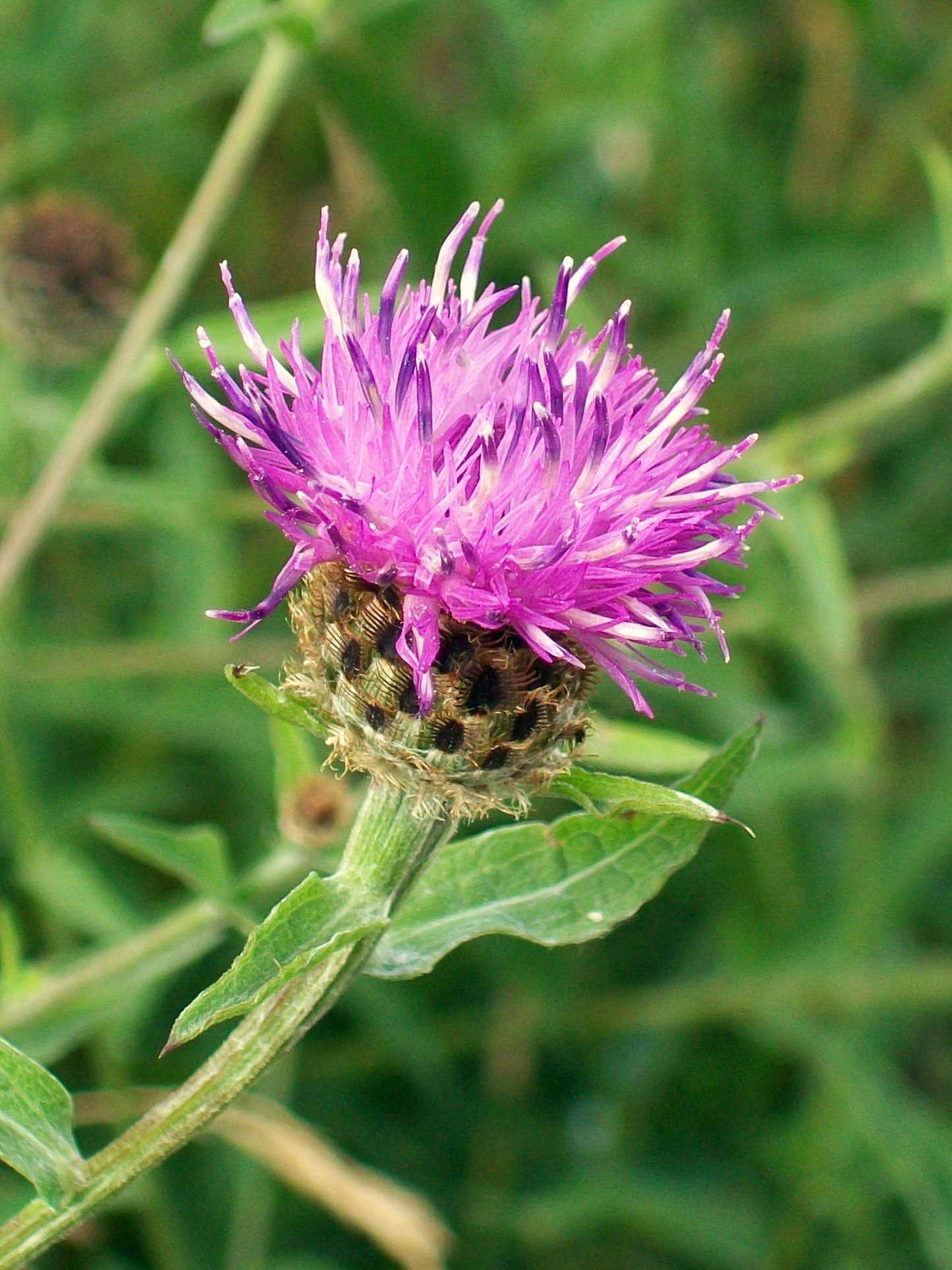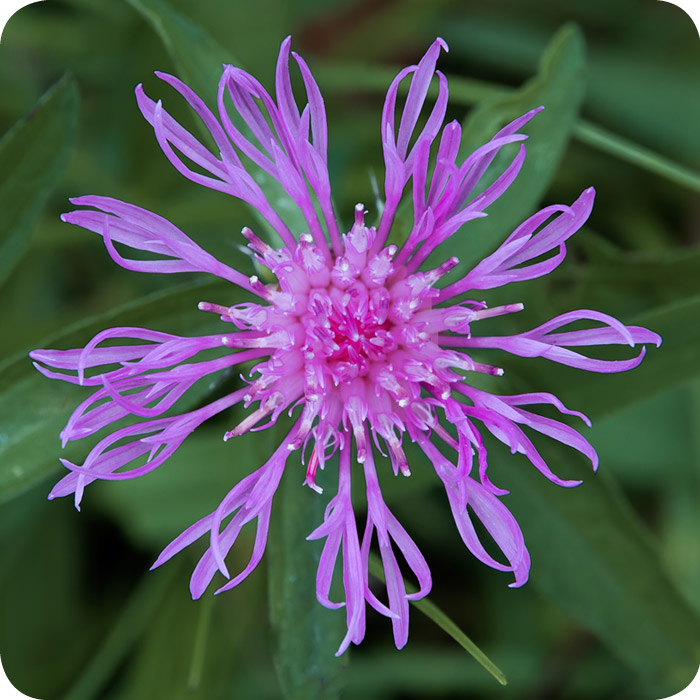Greater knapweed (Centaurea scabiosa) plants for bees and butterflies

Greater Knapweed (Centaurea scabiosa) closeup Photos, Diagrams & Topos SummitPost
Centaurea stoebe: involucre 6-8 mm wide, the bracts with several prominent longitudinal veins, and fertile flowers 12-15 mm long (vs. C. scabiosa, with the involucre 18-25 mm wide, the bracts lacking prominent longitudinal veins, and fertile flowers 20-25 mm long).

Greater knapweed (Centaurea scabiosa) Plantlife Shop
Centaurea scabiosa, or greater knapweed, is a perennial plant of the genus Centaurea. It is native to Europe and bears purple flower heads. Greater knapweed is found growing in dry grasslands, hedgerows and cliffs on lime-rich soil. Upright branched stems terminate in single thistle-like flowerheads, each having an outer ring of extended.

Greater Knapweed (Centaurea scabiosa) plug plants Cumbria Wildflowers
Greater Knapweed, also known as Centaurea scabiosa, is a herbaceous perennial plant that is native to Europe and Western Asia. The plant produces large, showy flower heads that are 3-5 cm in diameter with purple petals arranged in a star-like pattern.

Greater Knapweed, Centaurea scabiosa Flowers NatureGate
Thriving on neglect, Centaurea scabiosa (Greater Knapweed) is an upright perennial with large purple, thistle-like flower heads, 2 in. wide (5 cm), adorned with prominent outer florets from mid-summer to early fall. Attracting bees, butterflies, and other admirers, the bold blossoms appear atop sturdy stems above the foliage of pinnately lobed leaves.

Centaurea Scabiosa Greater Knapweed Stock Photo Download Image Now Backgrounds, Beauty
Centaurea scabiosa or greater knapweed is a perennial plant of the genus Centaurea. It is native to Europe and bears purple flower heads.

Greater Knapweed (Centaurea scabiosa) Photograph by Science Photo Library Fine Art America
Knapweed seedlings growing with others in a seed tray. Collect knapweed seed when brown and ripe and sow on bare, moist soil where plants are to grow, covering with a thin layer of soil. Or allow plants to self-seed and transplant the young seedlings to their final planting position. Divide established clumps whilst dormant, any time from.

Greater Knapweed (Centaurea scabiosa) Grote centaurie Greater, The Good Place, Flickr
Everything you need to know about Greater knapweed (Centaurea scabiosa), including propagation, ideal conditions and common pests and problems. We use cookies to analyse site performance and deliver personalised content. By clicking "Accept all", you consent to our Cookie Policy. Reject all Accept all.
Rufino Osorio Centaurea scabiosa Greater Knapweed
Common Name: Greater knapweed Genus: Centaurea Species: scabiosa Skill Level: Beginner Exposure: Full sun Hardiness: Hardy Soil type: Well-drained/light, Clay/heavy.

Centaurea Scabiosa Greater Knapweed Stock Photo Download Image Now Backgrounds, Beauty
Greater Knapweed. -. Centaurea scabiosa. Click here to support NatureSpot by making a donation - small or large - your gift is very much appreciated. Thank you. Medium to tall robust somewhat bristly plant to 1.5 metres. Stems erect, branched above. Leaves usually pinnately lobed with oblong or linear segments.

Centaurea scabiosa (Greater Knapweed) 11a flower Flickr
Common names: Greater knapweed hardheads centaurée scabieuse. Treatment appears in FNA Volume 19. Treatment on page 185. Mentioned on page 183. Perennials, 30-150 cm. Stems 1-several, branches ascending, glabrous to ± hirsute. Leaves minutely hispid, resin-gland-dotted; basal and proximal cauline petiolate, blades 10-25 cm, margins.

Greater Knapweed (Centaurea scabiosa) Species WildBristol.uk
Centaurea scabiosa (Greater Knapweed) is a species of perennial herb in the family Asteraceae. They have a self-supporting growth form. They have simple, broad leaves and achenes. Flowers are visited by Didea fasciata, Syrphid fly, Cheilosia bergenstammi, and hedge brown. Individuals can grow to 0.72 m.

Greater Knapweed Centaurea scabiosa Phoenix Amenity
A perennial with finely bristly erect grey-green stems, Greater Knapweed grows up to 1.2m in height and its upper part branches freely. Knapweeds are readily distinguished from thistles by the absence of spines and prickles. Greater Knapweed leaves are alternate, stalked, dark green and slightly leathery; mostly they are pinnately lobed (but.

Greater Knapweed (Centaurea scabiosa) plug plants
RHS Botanical Art and Photography Show 14 June - 7 July 2024 RHS Botanical Art and Photography Show

Wildflowers Greater Knapweed, Centaurea scabiosa
Greater Knapweed (Centaurea scabiosa) A tall purple-flowering plant, Greater Knapweed may be found growing on dry grassland, woodland tracks, and roadsides in calcareous (alkaline) soils in the Southern and Eastern areas of the UK. The long green stems each with a large (thistle like) flower can be seen June - September, and attract many.

Greater Knapweed (Centaurea scabiosa) 5 Wildflower Plants from Woolmans
Centaurea scabiosa, or greater knapweed, is a perennial plant of the genus Centaurea. It is native to Europe and bears purple flower heads.

Buy greater knapweed Centaurea scabiosa
Greater knapweed is a thistle-like plant that can be found on chalk downlands, roadside verges, woodland rides, hedgerows and clifftops. It is more restricted in its distribution than its close relative, Common knapweed, being found mainly in England on chalky soils. It is in bloom from June to September and is a huge favourite of all kinds of.